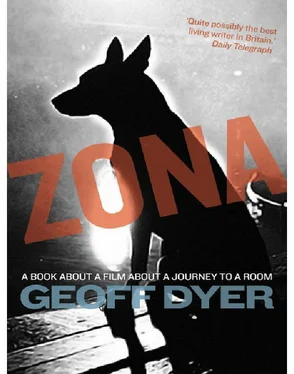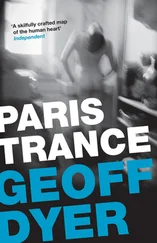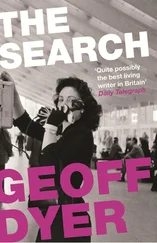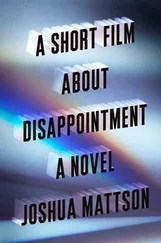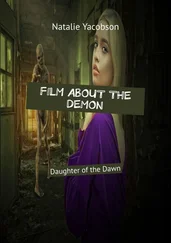They fed it, not with corn,
but only with the possibility that it might be.
And this gave the beast such strength
that a horn grew from its brow. 21
It’s a gift, this place, the Zone, Professor continues, diligently tying bandages to the nuts. Some gift, says Writer, hand pressed to the side of his head as if talking on a mobile phone. Why would they give it to us? To make us happy, says Stalker, back from his walk, tail wagging. He’s in a really good mood now, smiling, clambering past the rotting telegraph poles (part of one actually falls apart as he goes past). Even a reprise of the spooky anguished animal howl does not dent his good humour. Yes, he’s having the time of his life — so much so that, without even checking his (wife’s) watch he declares, It’s time, and sends the trolley clanking back the way it came, along the curving rails, past an abandoned tanker, back into the mists, into the world of black-and-white, and ultimately out of sight, beyond the Zone, beyond the screen. He might just as easily have announced the opposite — it’s not time. Or at least it’s very difficult to work out how much or little of it is passing. Still, sending back the trolley like this begs an obvious question and Writer is the one who asks it: How are we going to return? (It is only now that I notice that they are literally at the end of the line; the rail, here, is blocked by debris. Either the Zone causes the railway to stop or the Zone begins wherever the railway ends. Either way, the Zone is a place you can’t pass through, only ever arrive at.) Stalker ignores the question but it seems possible that a well-read fellow like Writer has come across the answer before, in one of Kafka’s Zürau Aphorisms: ‘Beyond a certain point there’s no return. That’s the point that must be reached.’ The surprising thing — they’ve only just got here — is that they’ve reached that point already.
Stalker tells Professor to make his way to the last telegraph pole, by the abandoned car. The camera glides towards the car. Plants sway in the breeze a bit. We can hear the sound of footsteps on grass, can see tufts of grass being flattened at the bottom of the screen, so presum-ably, even though there is no attempt to visually convey the slight jolt of walking, this is the professor’s P.O.V. The vehicle, we can see now, contains the burned corpses of two figures hunched over the rusted remains of a machine gun. Scary. Hint of horror. These, I’m guessing, were some of the troops mentioned in the caption, sent into the Zone to…do what? To quell it, as the Soviet tanks did in Prague and Hungary? But what was there to quell? There was no uprising, no people on the streets — not even any streets. Nothing. The mere existence of the Zone was a threat. Through the window can be seen the hulks of burned-out tanks in the distance and, nearby, coming into frame, Stalker, Professor and, finally, Writer. So it was not Professor whose eyes we were seeing through. Or at least if it started out that way then it changed without our realizing. This happens repeatedly. We assume that we are sharing the view of one of the participants only to find that he comes into his own field of vision, thereby creating the sense that there is another watcher. The convention whereby the movements of a potential victim are tracked by a camera pregnant with menace — the camera as stalker — is common to all suspense films but here the movement from participants’ subjective view to that of an undisclosed third party creates a disquieting sense of there being an extra pair of eyes. There is never a sense that this is the point of view of an actual person, of someone who is stalking the Stalker: it is like an additional consciousness (that of the Zone itself?), alert and waiting. Perhaps this is what Tarkovsky meant when he said that he wanted us to ‘feel…that the Zone is there beside us.’ In other words, that extra person (that extra pair of eyes) is us (are ours). The Zone is film.
STALKER THROWS ONE of the bandage-trailing nuts to indicate the route they must take. The three figures make their way towards moss-covered, rusting tanks, troop carriers and artillery pieces. All of this is observed, roughly, from the window of the burned-out vehicle with the charred figures hunched over the machine gun. Is theirs the consciousness implied by the camera’s silent watching and waiting? 22Is the Zone a place where the dead retain their ability to observe and to see, a consciousness absorbed by the twitching vegetation it apprehends?
One by one they disappear from view into a dip, first Professor, then Writer, finally Stalker himself. We see, for the first time, that Stalker was right: there really is no one here, not a soul, only this graveyard of long-abandoned matériel, rotting in the grass, in the open air, just that and the breeze and the vegetation twitching in the breeze, watched and watching.
A LONGISH SHOT of the three of them, framed by trees, plants, foliage, heading towards us, towards the place they’re heading. For the first time they seem not exactly dwarfed but diminished by their surroundings. The woody sound of a cuckoo, which might be a wood pigeon. Stalker throws another nut. As a method of route-finding this nut-thro wing is a bit puzzling. The suggestion is that they are at the mercy of the nut itself, of where it happens to land, as a gambler’s fate is decided by where the ball ends up on a roulette wheel. But unless Stalker is a complete klutz, the nuts always land within a few feet of where he intends them to, so there’s nothing random about the route. Maybe this is part of Stalker’s skill and vocation: reading the landscape, seeing the signs inscribed invisibly within it — like an old woman divining a future only she can see in the pattern of tea leaves in a cup — working out where to go and throwing the nuts as temporary signposts, signposts that are good for one journey only. Stalker said that Porcupine was the teacher who opened his eyes — opened them, presumably, to the mythic significance of certain places and landmarks, to the events that are indistinguishable from the places where they occurred. When did they occur? They occurred here, and here, and here. While Stalker went off on his own to commune with the Zone, Professor told Writer that the meteorite — which may not have been a meteorite — landed about twenty years ago but Stalker’s sense of what happened can’t be expressed or measured in these units. The story of the Zone, for him, is like Aboriginal Dreamtime: not a set of events that took place in the over-and-done-with past, but lurking in the permadepths of the present.
Other than the nut-throwing not much is happening. Except the camera is closing in, so slowly and so slightly it makes almost no difference, other than to alert us— even if only subliminally — to the fact that something is always either happening or is about to happen or might happen. The Zone is a place — a state — of heightened alertness to everything. The tiniest movement makes a difference. Any deviation from the route indicated by the chucked nuts, Stalker claims, is dangerous. Stalker here is using the word route in precisely the opposite sense of Milan Kundera in Immortality. For Kundera a route ‘has no meaning in itself; its meaning derives entirely from the two points that it connects.’ Whereas a road is ‘a tribute to space’, a route is ‘the triumphant devaluation of space.’ Kundera is using the word route in the sense of route map (which is actually a map of roads in the sense of highways). The route through the Zone is nothing if not a tribute to space. Be that as it may, Writer, having been initially fearful, is getting fed up with Stalker’s nutchucking idea of route planning. He might be Russian but he is the embodiment of a distinctly English attitude: fuck this for a game of soldiers! Why can’t we go straight to the Room? We could be there in a few minutes. In other words he’s impatient with the route precisely because it is not a route in Kundera’s sense. It’s dangerous, Stalker says again. Actually, the main danger seems to be coming from Stalker himself. When Writer starts idly tugging on a tree, vandalizing the place, Stalker (who, let’s not forget, had himself damaged a telegraph pole just a few minutes earlier) chucks a weighty metal tube at his head for being flippant.
Читать дальше
